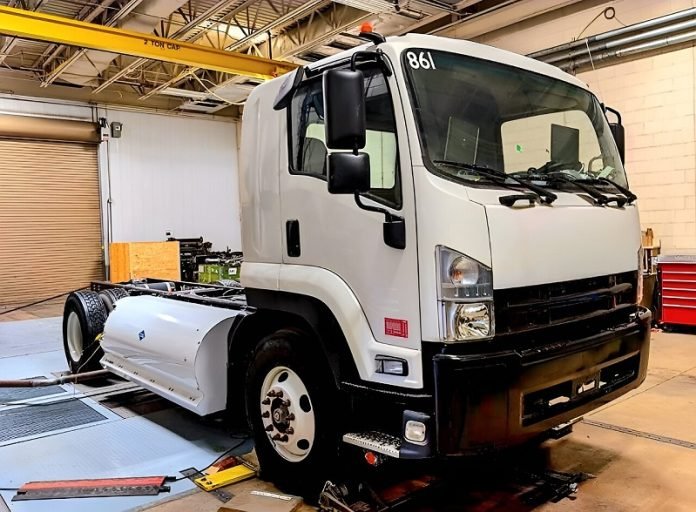
In an exciting development for environmentally conscious transportation, the Southwest Research Institute (SwRI) has introduced a groundbreaking medium-duty truck powered by natural gas and equipped with a hybrid engine.
This innovative vehicle is a big leap forward in reducing pollution, achieving a remarkable 25% decrease in greenhouse gas emissions compared to traditional diesel trucks.
Natural gas is known to be cleaner than diesel, but until now, engines designed for natural gas didn’t perform as well.
SwRI’s team, however, has ingeniously redesigned the engine to work more efficiently with natural gas, making it as powerful as diesel engines while being kinder to the planet.
The truck combines a special engine designed by SwRI with a hybrid system and a 40-kilowatt-hour battery pack. This combination is a part of a larger effort to advance natural gas vehicle technologies, a project that saw the collaboration of Isuzu Motors, Woodward Inc., and the South Coast Air Quality Management District (SCAQMD).
By starting with a diesel truck as their benchmark, the research team aimed to create a natural gas engine paired with a hybrid system that would not only consume less fuel and save energy but also cut down on emissions and overall costs.
Ryan Williams, who leads the engine team at SwRI, highlighted that their success was partly due to designing a cylinder head based on modern gasoline engines, which allowed for quicker combustion and thus greater efficiency.
This truck isn’t just any hybrid; it boasts a “P2” setup, which includes a powerful 100 kW electric motor situated between the engine and transmission, all backed by a robust 40 kWh battery.
This smart design enables the truck to switch effortlessly between electric vehicle mode, engine-only mode, and a combined hybrid mode depending on the driving conditions.
Remarkably, this truck doesn’t just cut down on carbon dioxide emissions. It’s also engineered to reduce nitrogen oxides (NOx), which are harmful pollutants, to meet even the strictest future standards.
The vehicle successfully meets a very low emission target, making it an impressive example of how technology can lead to cleaner, more sustainable transportation.
This project not only showcases significant advancements in reducing harmful emissions but also paves the way for the future of eco-friendly commercial transportation, making it a beacon of hope for a cleaner, greener planet.



